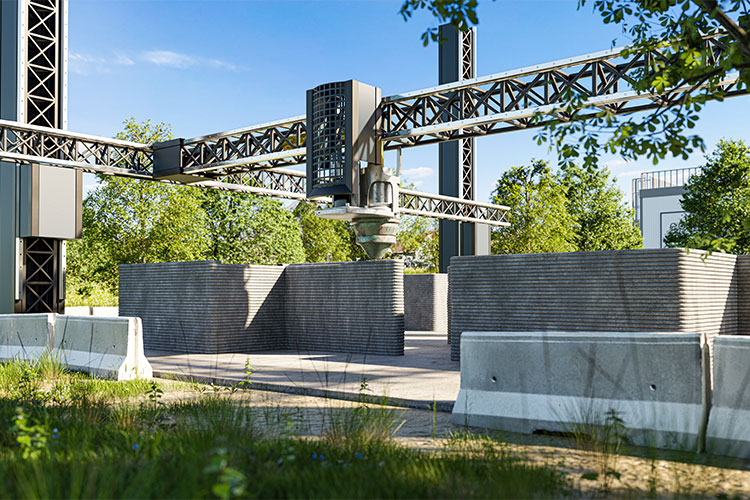

The innovative project aims to enhance online pickup and delivery services while showcasing the potential for cost-effective and sustainable construction in retail
September 26, 2024 | Staff Reporter | USA | Design

Walmart is venturing into 3D concrete printing as a novel approach to building retail spaces, partnering with Colorado-based Alquist 3D to create an 8,000-square-foot addition to its store in Athens, Tennessee. This project marks Walmart's first significant use of 3D printing technology in a commercial context, aimed at enhancing online pickup and delivery services.
3D concrete printing, which employs large robotics to construct structures using concrete mixtures, has gained traction primarily in residential construction. Notably, a community of 100 3D-printed houses near Austin, Texas, has highlighted the technology's potential. Patrick Callahan, CEO of Alquist 3D, emphasized the goal of creating "better, greener, stronger, cheaper, faster structures," indicating interest from other retailers as well.
Mike Neill, Walmart's VP of construction, stated that the retailer explored various printing methods and chose Alquist for its expertise in 3D materials and robotics. "Walmart is always looking to innovate and leverage developing technologies," Neill remarked. "As we dug deeper into the opportunities within 3D concrete printing, we decided it was a direction worth exploring."
While the cost of the Walmart project aligned with traditional construction, Callahan believes that as the technology matures, it could become more cost-effective. He noted that the project took 45 days to print, a timeframe he believes could be halved with further refinement. The materials used are more sustainable, with plans to utilize entirely carbon-neutral options in the future.
Despite its promise, 3D printing for commercial buildings is still in its infancy. A report from 3D printer manufacturer COBOD identified only 130 3D-printed buildings by 2023, with 55 constructed in 2022. Julie Hyson from JLL stated that while clients have yet to express interest in concrete printing, there is growing attention towards innovations that enhance construction efficiency.
Callahan acknowledged the challenges faced during the project, including weather and technical setbacks. The quick-setting nature of the concrete made corrections difficult, necessitating nighttime printing to mitigate heat and humidity issues. "If you weren’t like a NASCAR crew in pausing and cleaning up your hoses and your pump, you could lose all of your hoses because the material would literally harden in the hose," he explained.
While the technology currently faces hurdles related to aesthetics, quality control, and regulatory compliance, experts believe it holds potential for revolutionizing construction. Matt Abeles of Associated Builders and Contractors noted that as technology evolves and becomes more affordable, contractors may adopt it more routinely, addressing workforce shortages and reducing material waste.
For Walmart, the goal of the 3D printing project was to demonstrate commercial viability, and the results have led to further collaboration with Alquist on additional projects. Callahan expressed optimism about future developments, stating, "Now, what they want to see is through one entire build, how fast can we actually go and how much can we actually save now that we’ve learned all of these lessons."
As Walmart continues to explore innovative technologies—from self-driving forklifts to 3D printing—the company aims to streamline operations and reduce reliance on human labour across its business model.
For the latest news on design, subscribe to the REM TIMES newsletter